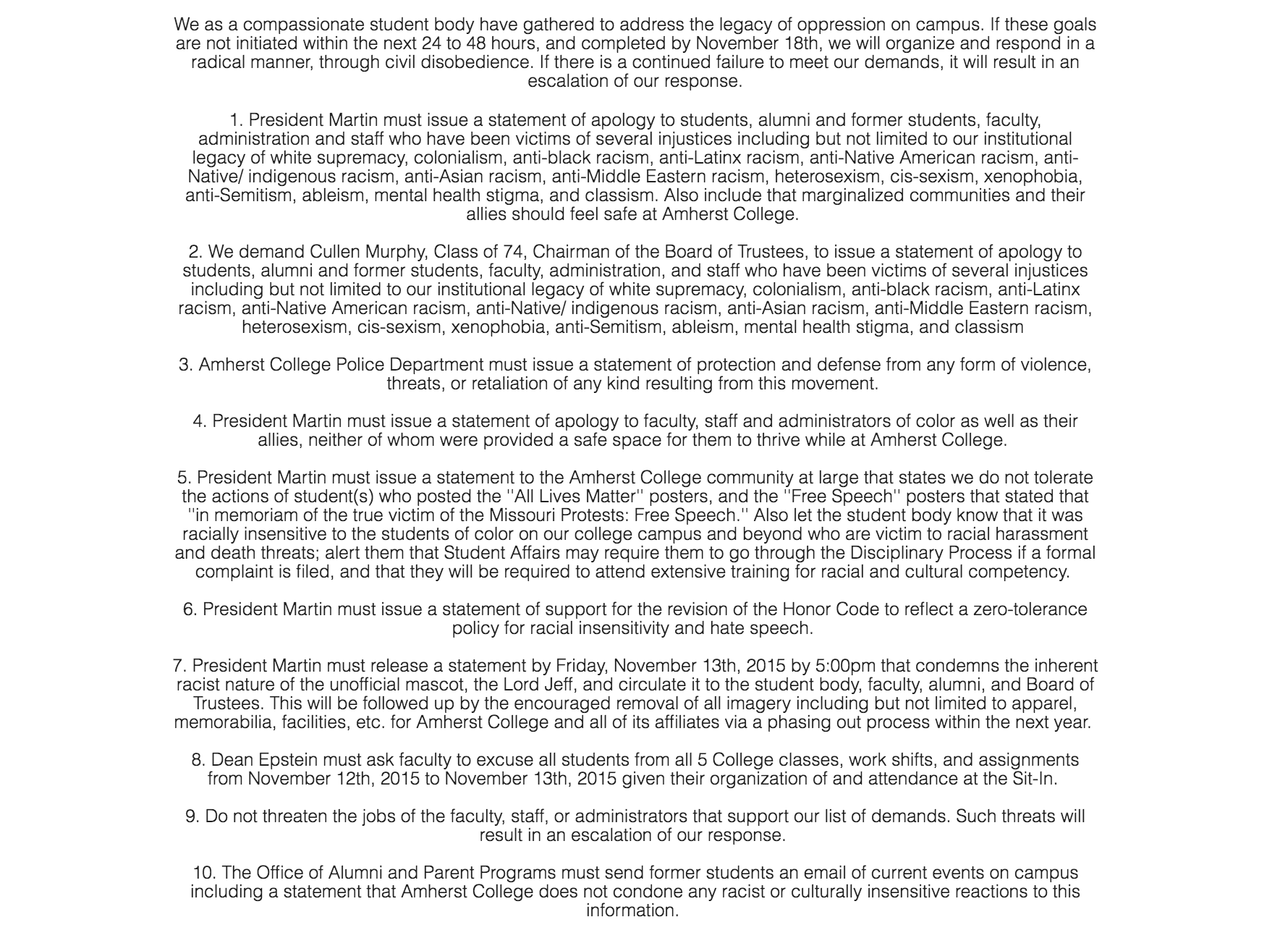Flipping through old copies of The Amherst Student from the 60s and 70s, I have slowly begun to realize that history has a tendency to repeat itself, and that students back then were asking the same questions we ask now. Take the two pictures below. The first one is from the Afro-American protest in 1969 and the second is from #AmherstUprising in 2015. Both reflect the turbulent time period the protests arose from, and both are making demands to the administration to give voice to the marginalized populations at Amherst College.


Another interesting aspect about the history of student protests at Amherst College is that not all of them were meant to be taken seriously. It seems like a couple of times a year, there have been several articles that say “protests” but describe a party gone wild. I wondered if this reflected the divide between student activists and non-student activists on campus (aka those who took civil disobedience seriously and those who didn’t) or if this was the student publication’s idea of humor back in the day. In any case, with these types of articles, it is hard to trace the intent and origin behind the sarcastic use of the word “protest,” and I concluded that I would consider it a lost cause to try to look deeper.
I am still delving into the archives to find out more about student protests, but as a group, we have also stepped back to look at the bigger picture. We are working to create a timeline of student publications from the beginning of Amherst College. After importing all the details from our abstract list and fitting them onto the Excel template given by TimelineJS (the digital humanities tool we decided to use), we now face the task of cleaning it up and making it look presentable. So far we have organized the publications into one of these categories: News/Student Life, Humor/Satire, Literary Magazine, Journals of Thoughts, Academic Journals, and Yearbook. This categorization has helped me to understand that repeating patterns in student publications, especially the tendency to express themselves creating new student publications when there is not one that feels sufficient. We also cleaned up the dates for each publication, double checking with the finding aid and special archives. This task was mind-numbingly mundane (see the comic strip below), but at the very least, helped me see how many single issue publications there were.

It seems like I am achieving a good balance of doing purely research and then stepping back to see how this fits into the bigger picture. At least, the timeline is giving me a vague feeling of productivity.